 |
||
|
||
| ||
Intel Introduces First IA System on Chip for Consumer Electronics SPEC Releases SPECmail2008 Benchmark NVIDIA MCP72/78 to Support ACC Overclocking No Widescreen 12-14-inch Notebook Displays Until Q2'09 Hynix Demonstrates World's First 16 GB 2-Rank DIMMs Intel Shifts Future Core Processors Into Turbo Mode 19 Photos of ASUS P6T Deluxe Motherboard for Intel Core i7 CPUs Palm Treo Pro Launched Officially Intel Introduces First IA System on Chip for Consumer Electronics At the Intel Developer Forum, Intel Corporation introduced the Intel Media Processor CE 3100, the first in a new family of purpose-built System on Chips (SoCs) for Consumer Electronics devices based on the company's Intel Architecture (IA) blueprint. Executives on Wednesday also provided updates on the Mobile Internet Device (MID) category and Intel Atom processor, unveiled a brand with DreamWorks Animation SKG Inc. around the shift to 3D movie-making and outlined a number of efforts to speed many-core processor software design. The CE 3100 has been developed for Internet-connected consumer electronics (CE) products such as optical media players, connected CE devices, advanced cable set top boxes and digital TVs. The media processor (previously codenamed "Canmore") combines CE features for high-definition video support, home-theater quality audio and advanced 3D graphics, with the performance, flexibility and compatibility of IA-based hardware and software. As another SoC product from Intel, the Intel Media Processor CE 3100 is a highly integrated solution that pairs an IA processor core with multi-stream video decoding and processing hardware. It also adds a 3-channel 800 MHz DDR2 memory controller, dedicated multi-channel dual audio DSPs, a 3D graphics engine enabling advanced UIs and EPGs, and support for multiple peripherals, including USB 2.0 and PCI Express. The Intel Media Processor CE 3100 also features Intel Media Play Technology that combines hardware-based decoding for broadcast TV and optical media playback with software-based decode for Internet content. When a consumer watches broadcast TV or content on optical media players, the video is encoded in standard formats, such as MPEG-2, H.264 or VC-1. Intel Media Play Technology software routes the video to the on-chip hardware decoders. When viewing Internet content, the software automatically routes the video, and audio as applicable, to a software codec running on the IA processor core. As the Internet becomes more omnipresent, the ability to decode multiple video and audio formats will provide the industry with greater flexibility to evolving standards and technologies, and consumers with more viewing experiences. The Intel Media Processor CE 3100 is scheduled to ship to CE manufacturers, including Samsung Electronics Co., Ltd. and Toshiba. Also, Anand Chandrasekher, Intel senior vice president and general manager for the Ultra Mobility Group, discussed how Intel Atom processor Z5xx series-based MIDs are becoming platforms for innovation in the mobile ecosystem. He added that the Internet revolution continues unabated with the rapid growth of social networking, user-generated content and location-based services. These trends are even more important for mobile users who are demanding the right device to take this experience with them. Building on the launch of the Intel Atom processor for MIDs in April, Chandrasekher reinforced the growing need for performance, Internet and software compatibility, and wireless broadband connectivity in order to bring Internet innovations to pocketable devices. He showcased a range of MIDs coming to market across the target market segments and welcomed executives from Clarion and Panasonic to launch their products in the U.S. market. Chandrasekher also demonstrated the world's first full 1080p high-definition video playback in a handheld device on the upcoming OQO MID. Additionally, he highlighted MIDs from Fujitsu and Lenovo. Supporting the diverse range of devices spotlighted at IDF this week in San Francisco is a rapidly developing software ecosystem based on the Moblin-based operating system. More than 10 software vendors, including GyPSii for social networking, Fuel Games for online gaming, Move Networks for Internet TV programming and Neusoft for UI and applications, announced plans for making their applications available for Moblin-based MIDs. Continuing on the path of innovation, Chandrasekher reinforced Intel's MID roadmap with the next-generation platform codenamed "Moorestown," which is on track for 2009/2010. Holding up the first wafer, he announced that first silicon has been produced, reinforced the versatility of the architecture, and the opportunity to target the communication MID with data and voice capabilities. Source: Intel Corporation SPEC Releases SPECmail2008 Benchmark The Standard Performance Evaluation Corp. (SPEC) has released SPECmail2008, a new benchmark that measures performance for enterprise mail servers compliant with SMTP and IMAP4 protocols. The new benchmark uses real-world workloads to simulate the typical activities of mail servers operating in business enterprises. It complements SPECmail2001, which is designed for the consumer ISP market based on servers compliant with POP3 and SMTP protocols. SPEC expects that vendors of e-mail server products will use SPECmail2008 to optimize products under development and to compare performance against competitors. IT managers will use it for product evaluation and to configure mail servers for better efficiency. Workloads for the benchmark come from data samples collected by participating member companies and universities over an 18-month period. An additional two years was spent analyzing the data to emulate most of the popular IMAP clients, and to simulate common usage patterns within organizations. In addition to the standard set up, users can customize the workloads to reflect their own usage patterns and preferred IMAP client software. The metric for the benchmark, SPECmail_MSEnt2008, represents the number of IMAP4 sessions during a peak hour. SPEC member companies active in developing SPECmail2008 include Citrix Online, CommuniGate, Mirapoint, Openwave Systems and Sun Microsystems. SPECmail2008 is available immediately from SPEC for $1,800; discounts are available for qualified non-profit and educational institutions. Source: SPEC NVIDIA MCP72/78 to Support ACC Overclocking As you know, AMD SB750 Southbridge supports ACC (Advanced Clock Calibration) technology called to uncover the overclocking potential of AMD Phenom CPUs. New products based on this Southbridge (like 790GX) have already gone on sale as a part of MSI DKA790GX, Biostar TA790GX A2+ and other motherboards. According to the source, ACC won't be exclusive to AMD for long. If the slide below is true, NVIDIA's plans regarding MCP72/78 unambiguously indicate the complete support of AMD ACC. The company will just have to use the JTAG interface and introduce certain changes into topology, connecting CPU and MCP72/78. 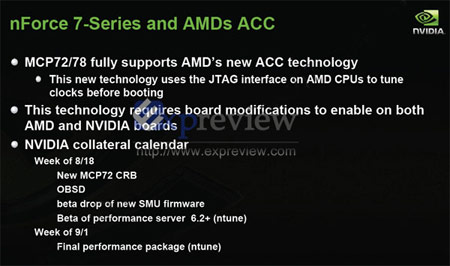 The first motherboards on MCP72/78 with ACC support are expected on September 1. Note that not all MCP72/78-based motherboards can offer ACC support, since it requires hardware modifications. Source: Expreview No Widescreen 12-14-inch Notebook Displays Until Q2'09 Though notebook makers are already using 16:9 widescreen displays in new models, it's still early to speak about their mass production. This information was supplied by the source referring to companies that produce notebooks on ODM (Original Design Manufacturer) terms. According to this information, notebooks with 12-14-inch 16:9 displays will enter mass production not before Q2'09. In H2'08 first-tier vendors are focused on 15.6-inch, 18.4-inch and 10.1-inch displays with 16:9 aspect ratio. Apparently, this includes both usual notebooks and netbooks. Chi Mei Optoelectronics (CMO), AU Optronics (AUO) and LG Display (LGD) are ready to start shipping 10.1-inch panels in October. Source: DigiTimes Hynix Demonstrates World's First 16 GB 2-Rank DIMMs Hynix Semiconductor announced that it is using MetaRAM's new DDR3 technology in its next generation R-DIMMs, including the world's first 16GB 2-rank DIMM (HMT32GR7AER4C-GD), which is demonstrating at the Intel Developer Forum (IDF) in San Francisco (August 19th – 21st). Hynix is also offering 8GB (HMT31GR7AER4C-GC) 2-rank DIMMs. DDR3 MetaRAM is similar to the previous generation of DDR2 technology that enables significantly more memory in a server. An added benefit of the DDR3 MetaRAM technology is that enables larger memory capacity without negatively impacting the operating frequency of the DDR3 memory channel. It is the only technology that has been demonstrated to run 24GB of DDR3 SDRAM in a channel at 1066 million transactions per-second (MT/s). Using 3 of 16GB DIMM, users can achieve 48GB per channel running at 1066 MT/s, while other competing solutions max out at 16GB per channel at 1066MT/s, the press release states. Along with its earlier DDR2 technology, the DDR3 MetaRAM technology enables Hynix to introduce cost-effective, high capacity R-DIMMs by using mainstream 1 Gigabit DRAMs. Source: Hynix Semiconductor Intel Shifts Future Core Processors Into Turbo Mode In his Intel Developer Forum keynote, Pat Gelsinger detailed the roadmap for Intel's continued march toward pervasive, higher performance and power efficient computing. The senior vice president and general manager of Intel's Digital Enterprise Group discussed new features of the company's next-generation processor family including a new turbo mode. The company's first desktop PC chips branded Intel Core i7 processors and initial energy-efficient, high-performance server products (codenamed "Nehalem-EP") will be first to production. Intel is also planning to manufacture a second server derivative designed for the expandable sever market ("Nehalem-EX"), and desktop ("Havendale" and "Lynnfield") and mobile ("Auburndale" and "Clarksfield") client versions in the second half of 2009. The next-generation Core microarchitecture also features Intel Hyper-Threading Technology delivering up to 8-threaded performance capability on 4 cores in the initial versions and improved memory bandwidth thanks to the new QuickPath Interconnect. QuickPath is a technology that connects processors, chipsets and memory together, and delivers up to three times the memory bandwidth of previous generation Core microarchitecture solutions. The new Intel Xeon processor X7460 with 6 cores and 16MB L3 cache for expandable servers launching in September has already broken multiple performance world records. An 8-socket IBM System x 3950 M2 server became the first platform to break the 1 million tpmC barrier on the TPC-C benchmark. New 4-Socket performance records include TPC-C on HP Proliant DL580 G5, TPC-E on Dell PowerEdge R900, SPECjbb2005 on Sun Fire X4450 and SPECint_rate2006 on Fujitsu-Siemens PRIMERGY RX600 S4. Gelsinger also discussed the industry's first many-core Intel Architecture (IA) based design, codenamed "Larrabee." Expected in 2009 or 2010, the first product based on Larrabee will target the personal computer graphics market, support DirectX and OpenGL, and run today's games and programs. Larrabee is expected to kick start an industry-wide effort to create and optimize software for the dozens, hundreds and thousands of cores expected to power future computers. The Intel executive also outlined Intel's vision for the next wave of the Internet, called the Embedded Internet. Emerging markets in the embedded computing space such as IP networking and security, video intelligence, medical, in-vehicle infotainment and home automation can greatly benefit from the always-on Internet connectivity. Gelsinger said that this area is another growth opportunity for Intel and the high-tech industry, and predicted that there will be 15 billion devices connected to the Internet as a result of the rapid rise of the embedded internet. David Perlmutter, executive vice president and general manager of Intel's Mobility Group demonstrated the first working laptop platform codenamed "Calpella." Building on the recent Intel Centrino 2 launch for notebook PCs in July, Perlmutter unveiled Intel's first-ever mobile-focused quad-core laptop workstation – the Intel Core 2 Extreme processor. While the products include four cores, they only use 45 watts of power. Perlmutter also introduced the company's second-generation dual-core mobile processors for increasingly popular ultra thin and light notebook PCs. He also outlined upcoming mobile platform enhancements including the Intel High-Performance SATA Solid-State Drive product line for faster system responsiveness, lower power consumption and rugged, reliable operation and available later this year, Intel Anti-Theft Technology, which features intelligent hardware-based detection and response mechanisms that enable IT managers or service providers to disable the platform and/or access to data in case of loss or theft. Emerging WiMAX 4G networks around the world will be connecting the plethora of mobile platforms and devices, and specifically within the United States where Sprint XOHM plans to turn on its first citywide network in Baltimore in September. Globally, more than 400 WiMAX trials and networks2 extend the richness of the mobility experience. Perlmutter also announced that Dell has now joined other computer-makers such as Acer, Asus, Lenovo, Panasonic, and Toshiba as publicly committing to include the Intel WiMAX/WiFi Link 5050 Series module to future laptop product lines. Source: Intel 19 Photos of ASUS P6T Deluxe Motherboard for Intel Core i7 CPUs As you know, ASUS is preparing the P6T Deluxe motherboard designed for Intel Core i7 (Nehalem) CPUs. The German PCGH published a comprehensive image gallery of this novelty. ASUS P6T Deluxe is the first ASUS motherboard on the X58 chipset. 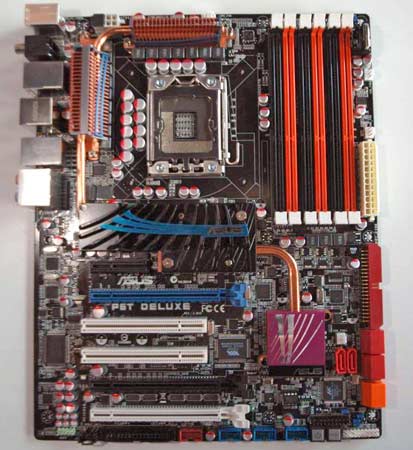 X58 Northbridge cooling. 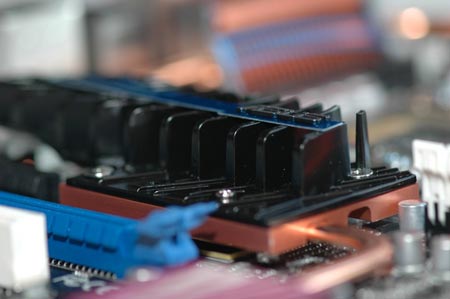 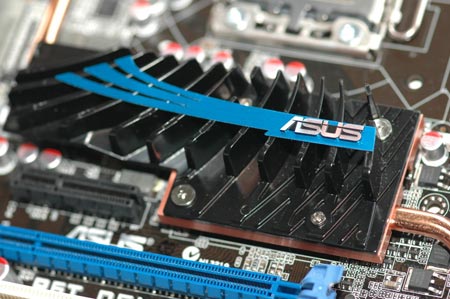 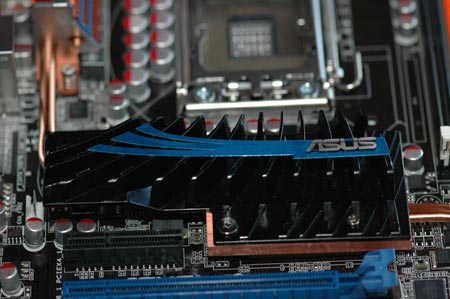 Power and reset buttons. 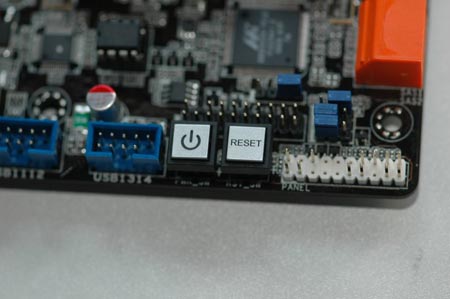 The new 1366-pin socket. 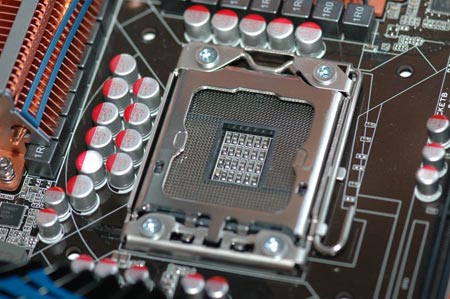 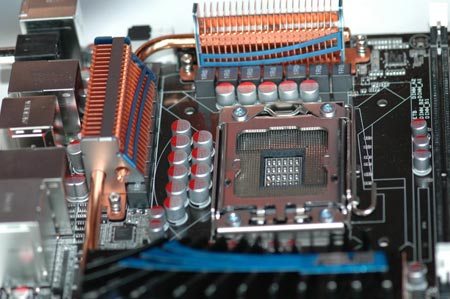 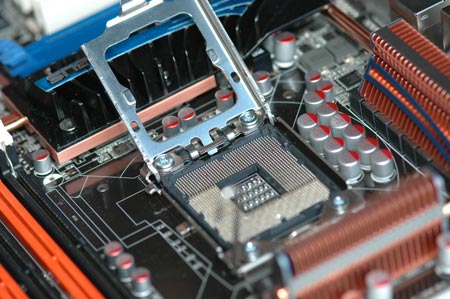 Voltage regulator cooling. 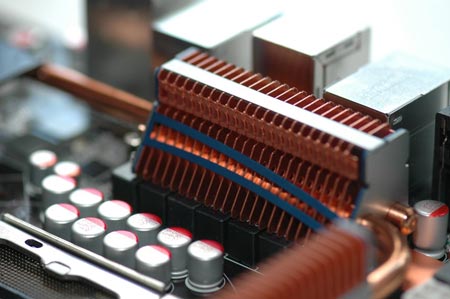 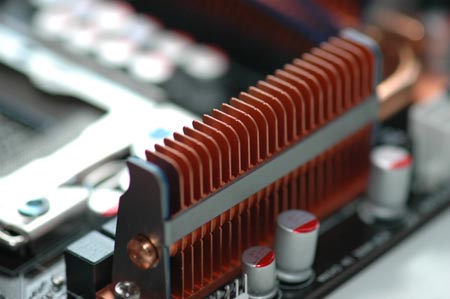 USB, e-SATA, FireWire, and the rest. 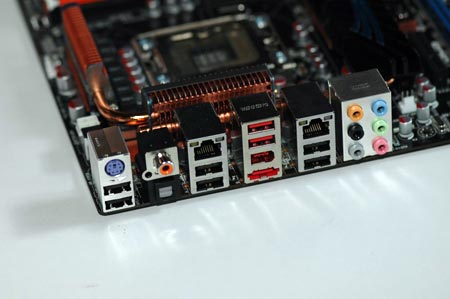 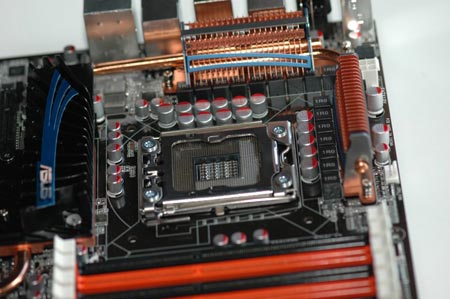 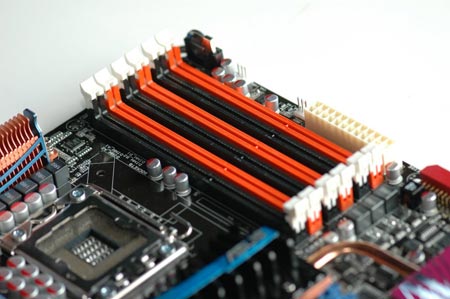 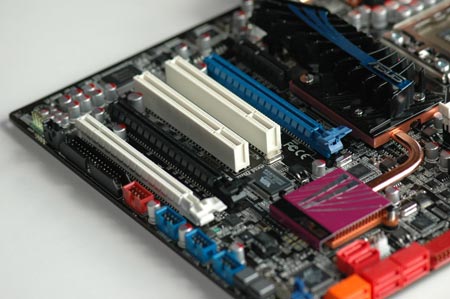 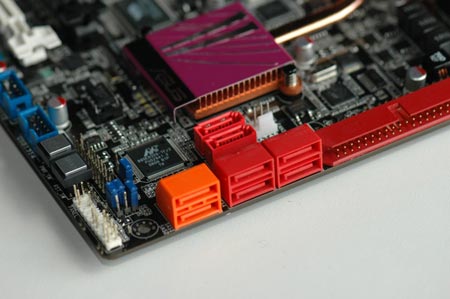 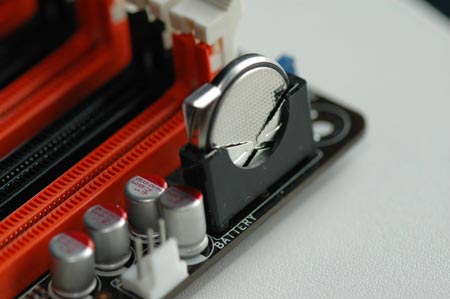 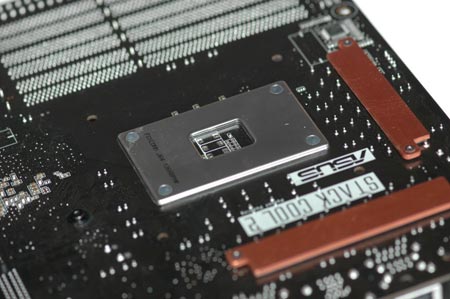 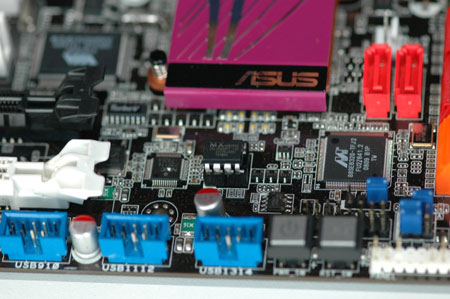 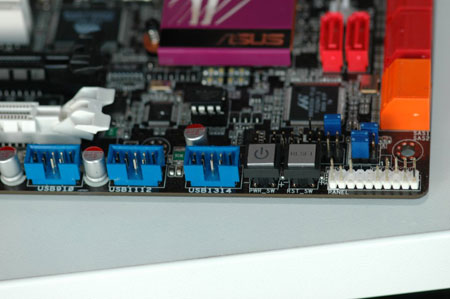 Source: PCGH Palm Treo Pro Launched Officially The long-anticipated novelty from Palm has finally seen the light. The new Treo Pro with Windows Mobile will be sold both with contracts and unlocked (!). It supports HSDPA, three UMTS bands, EDGE, GPRS and four GSM bands. Besides, it features built-in GPS, 802.11b/g and Bluetooth 2.0 + EDR connectivity.  Treo Pro features 320x320 touchscreen, 400MHz Qualcom MSM7201 processor, 128 MB RAM and 256 MB ROM (100 MB available for use), microSDHC slot (cards up to 32GB) and a 2-Mp camera. A hands-free can be connected via a standard 3.5mm jack. The device connects to PC via a microUSB 2.0 port. The smartphone powers from a replaceable 1500mAh Li-Ion battery, officially estimated to provide 5 hours of talking or 250 hours of standby. The device is sized 114 x 60 x 13.5 mm, weighing about 130 g.
The Treo Pro smartphone comes with an international power charger, microUSB cable and a 3.5mm stereo headset. Other accessories designed exclusively for Treo Pro (sold separately) include a vehicle power charger, leather side case, travel microUSB cable, cradle, extra battery, TTY audio adapter, and replacement styli. Treo Pro will be available in September in Europe through Vodafone (from free to 399 EUR with contract) and O2 (pricing is available from O2 direct sales and online business stores), and in Australia through Telstra (from free with contract). It will be available in the United States in the fall through the Palm online store as well as select Internet, retail and enterprise resellers for a suggested retail price of 549 USD (the U.S. version is unlocked and unsubsidized). Additional Treo Pro availability is scheduled to follow worldwide. Source: Palm
Write a comment below. No registration needed!
|
Platform · Video · Multimedia · Mobile · Other || About us & Privacy policy · Twitter · Facebook Copyright © Byrds Research & Publishing, Ltd., 1997–2011. All rights reserved. |